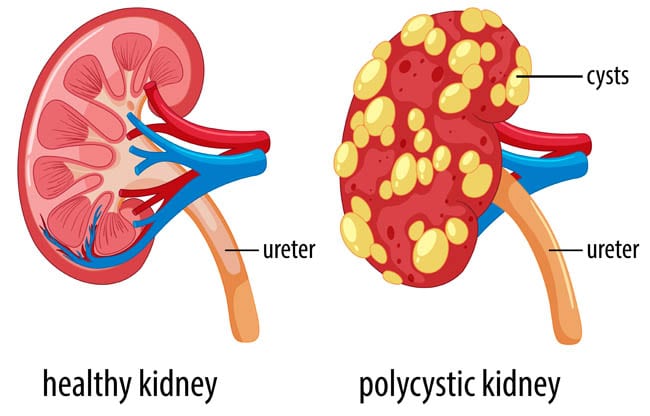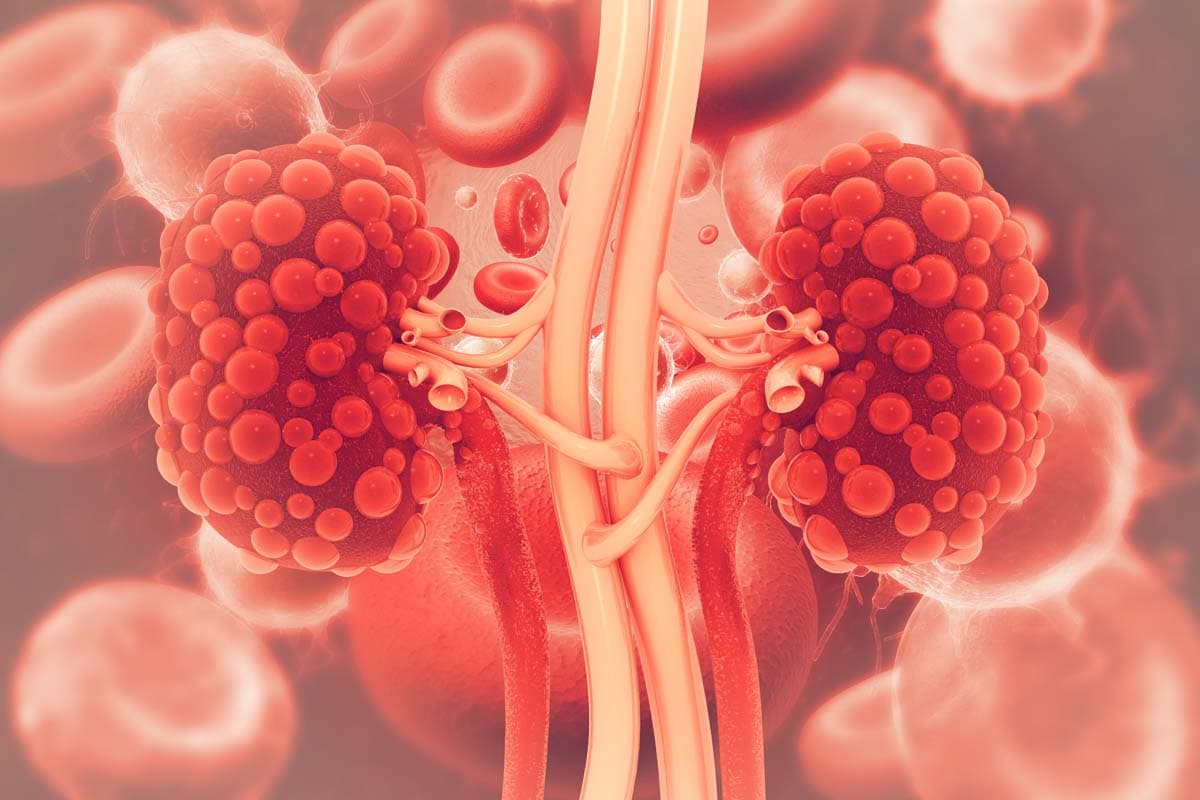What is polycystic kidney disease?
Autosomal Polycystic Kidney Disease (PKD) is a slowly progressive disease, which causes multiple fluid-filled cysts in the kidneys. Cysts are present from birth, but start small, slowly increasing in size. Cysts can range from very small to several centimetres in diameter. The increasing size of the cysts damage the normal kidney tissue, eventually causing kidney failure.

The number of cysts and the speed and size in which they grow varies from cat to cat. The average age of kidney failure in cats with PKD is 7 years, but some cats will suffer from kidney failure at an earlier age and some cats much later, and in fact, succumb to something other than PKD.
Persians, Exotics and breeds which have Persian in their lines including the British Shorthair and Scottish Fold.
Mode of inheritance
Genetic studies in cats have shown that PKD in cats is autosomal (non-sex-linked gene) dominant. This means only one parent needs the gene to pass it onto the offspring. There is a 50% chance of a cat inheriting PKD if a parent has it. If a cat is genetically free of PKD it is not possible to pass it on to its offspring.
Symptoms of PKD in cats
- Weight loss
- Depression
- Vomiting
- Drooling (due to nausea)
- Excessive thirst and urination
- Lethargy
- Enlarged kidneys
Diagnosis
- Ultrasound: Ultrasound diagnosis is 98% accurate after approximately 10 months of age.
- Genetic Test: A swab from inside the cheeks (buccal swab) is provided to a specialised laboratory for testing. This test is 99.9% accurate.
- ALL breeding cats should be tested for PKD.
Treatment
It is not possible to remove the cysts or slow down their growth. As the kidneys begin to fail, they lose their ability to filter out toxins.
To understand the treatment it is necessary to give a summary of how the kidneys work.
- Kidneys help control blood pressure by releasing an enzyme called renin. When blood pressure drops and kidneys don’t receive enough blood, renin is released; causing blood vessels to contract (tighten). When the blood vessels contract, blood pressure goes up.
- Kidneys filter waste products and excess water from the blood. The cleaned blood stays in the body and the waste products leave the body in urine.
- Stimulation of red blood cell production.
- They help maintain the proper balance of acid and minerals, including sodium, calcium, potassium, and magnesium, in the blood.
Treatment is the same as for a cat with chronic renal failure and the goal is to reduce the level of toxins in the blood.
- Fluid therapy: To treat dehydration.
- Prescription diet: These diets contain a lower percentage of protein and less phosphorus than normal cat food. Cats need protein every day for growth, building muscles and repairing tissue. After the body uses the protein in the foods, a waste product called urea is made. Cats with kidney failure are not able to get rid of this urea normally. Damaged kidneys may not be able to remove phosphorus from the blood. This causes the level of phosphorus in the blood to become too high. A high blood phosphorus level may cause the cat to lose calcium
- High blood pressure (hypertension): Medication may be prescribed if your cat’s blood pressure is too high.
- Antacids and anti-nausea medication.
- Erythropoietin: The kidneys produce a hormone, erythropoietin, which instructs the bone marrow to produce red blood cells. Cats with kidney failure often have a low red blood cell count. Only the human form is available and some cats may eventually recognise this substance as foreign and create antibodies against it.
What is the likely outcome for a cat with PKD?
It really varies from cat to cat. How many cysts are present, how large they grow and how quickly they grow. A cat with only a few small and slow-growing cysts may live to old age and eventually die from something unrelated to PKD. Other cats may have numerous, large and quick growing cysts and die at an early age.

